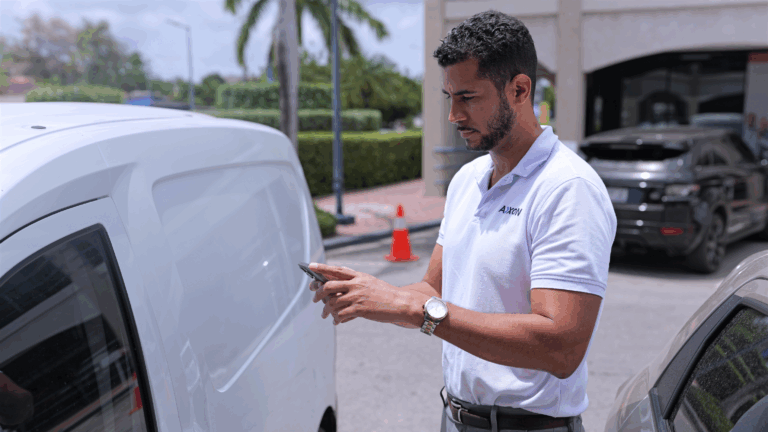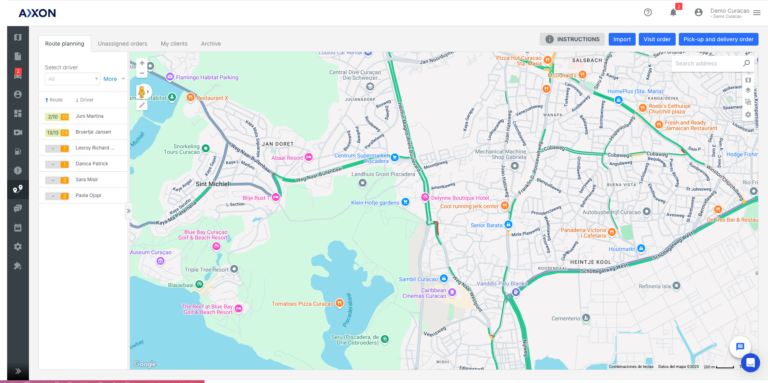How To Create A Driver Safety Program With This Complete Checklist
Our Driver Safety Program Checklist will provide you important elements to be included in your driver safety program.
💡 download the pdf file, link at the end of this blog post.
Why you need a Driver Safety Program
Motor vehicle crashes cost employers billions of dollars annually in medical care, property damage, lost productivity, and legal expenses.
By having a (defensive) driver safety program in place you can reduce risk and keep your employees safer on the road.
Regulatory Compliance
You need to adhere to your local road safety regulations, laws, and policies. It can also be a part of external compliance for ISO Certification; Quality Management, or Health and Safety Management for example.
Driver Safety Program Checklist
| Written driver safety policy | |
| Seat belts – Ensure all drivers and passengers are using seatbelts | |
| Impaired-free driving - Prohibit workers from operating a vehicle while impaired (substances, fatigue, and aggression). Include language to not schedule drivers for irregular hours or excessive overtime | |
| Distraction-free driving - Ban the use of cell phones and other electronic devices while driving, even hands-free | |
| Courteous driving – Adopt a courteous driving policy that clearly outlines responsible driving behaviors | |
| Organizational responsibilities – Define and communicate roles and responsibilities of leaders, supervisors, and workers clearly | |
| Driver responsibilities – Clearly outline driver responsibilities including pre-trip tasks, safe driving practices, and accident reporting |
| Vehicle selection process | |
| Safety ratings – Buy vehicles that come with high safety ratings based on crash testing. | |
| Safety features – Look for advanced safety features such as lane departure warning systems, collision warning systems, rear-facing cameras, and adaptive cruise control | |
| Driving conditions anticipated – Consider vehicle options based on location, weather, and roads traveled | |
| Employee needs – Select design features that address task needs and offer adjustability |
| Driver selection, orientation, and training | |
| Enroll in DMV’s automated reporting service or review DMV and background checks annually | |
| Driver orientation of safe driving policy and procedures | |
| Driver training upon hire | |
| Ride-along driving assessment | |
| Explain in-vehicle monitoring systems if present; focus on safety, not productivity | |
| Provide refresher training after a collision or driver infraction |
| Emergency equipment | |
| High-visibility vest | |
| Traffic cones or triangles | |
| Emergency escape tool (seatbelt cutter and window breaker) | |
| Bottled water and food | |
| Flashlight | |
| Jumper cables | |
| First-aid kit |
| Vehicle inspection and maintenance | |
| Pretrip inspection • Walk around - look behind and under for obstacles, people, or leaks • Tire pressure or damage • Look for damage to vehicle body or glass • Look in the vehicle before entering • Ask yourself “Am I well-rested and alert to be driving?” • Have navigation setup or your route planned in advance (download map to devices for availability offline) • Ensure cell phone is off and silent | |
| Verify that scheduled maintenance meets or exceeds the manufacturer’s recommendations | |
| Ensure there is a method for reporting maintenance problems | |
| Address any reported problems promptly |
| Organizational accountability | |
| Schedule ride-along driving assessment and coaching | |
| Implement a telematics program | |
| Conduct root-cause analysis of every incident | |
| Review incidents and follow-up on corrections | |
| Perform an annual program management review | |
| Promote positive reinforcements to improve driving behavior | |
| Encourage discussion with employees that highlights challenges, opportunities, and successes | |
| Avoid recognition for absence of collisions or vehicle damage |
| Post-incident | |
| What to do in the event of common roadside problems (animals, flat tire, emergency, weather event, downed power line, flooding, fires) | |
| Review your local Traffic Accident and Insurance Report to determine the appropriate information to collect | |
| Company incident report and procedures | |
| Communication expectation | |
| Recordkeeping and documentation |
Download this Driver Safety Program Checklist for free (no registration, just download ✌️)
This is how you integrate your Driver Safety Program in Axxons' GPS Tracking and Fleet Management Solution
- Monitor and assess driver behavior with reports and scorecards (speeding, harsh cornering, harsh breaking, harsh acceleration)
- Add context to safety related events with Axxon Connected AI Dashcams.
Gives you a 360 degree view of the situation, road conditions, and can provide proof of service or delivery. - Stop these 8 bad driver habits with connected dashcams for your fleet.
- Pre-trip vehicle, safety, and operational inspections by drivers via a mobile app
- Preventive maintenance; track when your assets need maintenance and prevent unplanned failures
- Relevant driver, vehicle, and relevant company documentation in one place
- Regulatory compliance; actionable reports provide the data you need
- Track your safety KPIs with scheduled reporting and get actionable data
With Axxon Tracking, you have simple, yet powerful tools to effectively monitor and manage your vehicles, temperatures, and other assets.
We provide businesses in the Caribbean with Industrial IoT tracking devices and management tools. Based on Curaçao, we service other islands; Aruba, Bonaire, Sint Maarten, Antigua and Barbuda, Martinique, Guadeloupe, Barbados, Grenada, Anguilla, Dominica, Saint Lucia, Saint Kitts and Nevis, Saint Vincent, with GPS Tracking, Asset Tracking, and Remote Temperature Monitoring Solutions.



